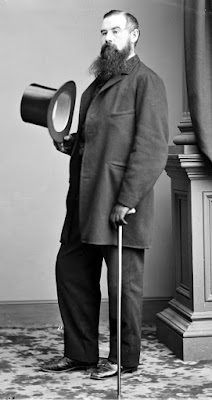And one more bit of Into The Woods news for Thursday:
Today also saw the launch of the
official website (although there's not a whole lot there apart from the trailer, cast list and the photos you've already seen) and new promo poster variations (see above and below).
The
Facebook page is finally becoming active too.
The important thing this confirms is that they're still releasing on Christmas Day in theaters in the US. I can see the Winter merchandise and decorations now... although they're mixing up with Narnia a bit in my head at the moment, which I wouldn't mind too much since so much of the first Narnia movie merchandise at the time of the release was just stunning. I'm going to do my best to be optimistic about this.
One note does concern me though: we're a little tired of fairy tale stories backstabbing us, or the media doing their level best to "shock" the public by uncovering their dark sides via these "OMG did you know..!" lists.
Adam over at Fairy Tale Fandom has a great and timely post on this very subject.

One thing my forced downtime made me do, since I couldn't handle computer screens, was to do a lot more reading. While I plan to get to the various books in more detail in the coming weeks, I have to admit my favorites were not the novels but the collections, specifically Jack Zipes' recent wonderful book,
The Golden Age of Folk & Fairy Tales from The Brothers Grimm to Andrew Lang and to a lesser extent, though still great to read,
Philip Pullman's Fairy Tales from the Brothers Grimm (with the English version and the
German version side by side so I could look at Shaun Tan's sculptures while reading).
Why? Because they were just "as is" - no emphasis on the happily ever after or the magic but also no emphasis on the dark, gruesome, grimness either. They were just tales in which something out of the ordinary happened and people had to choose how to respond and what, if anything, they should do about it.
When I started getting a lot better and could watch TV again, I also spent some time showing my kid some more of Miyazaki's movies and discussing extraordinary, ordinary things (if you follow me) and it struck me just how similar the sensibilities are - which is probably why I love the movies so much. While the fantasy creatures and impossible things were notable, it was clear that many of these things could have been either frightening or wondrous, depending on the context they were seen in and particularly how the child (usually it was a child) at the center of the story saw it. We weren't told "this is beautiful" or "this is scary", we had to hold our breath and see what the kid thought.
Here is an excerpt from a wonderful set of images, illustrating Miyazaki's philosophy in storytelling. It's something I sincerely wish more filmmakers, especially regarding family films, in English speaking countries would adopt:

The excerpt above is slightly out of context so you can see the full five illustrated page summary
HERE.
Anyway - these are my random musings as I watch fairy tales being presented to the public once again. I'm actually hopeful that
Into The Woods will work in favor of balancing some of the glitter vs gruesome polarization we currently see when the public contemplates fairy tales.





























